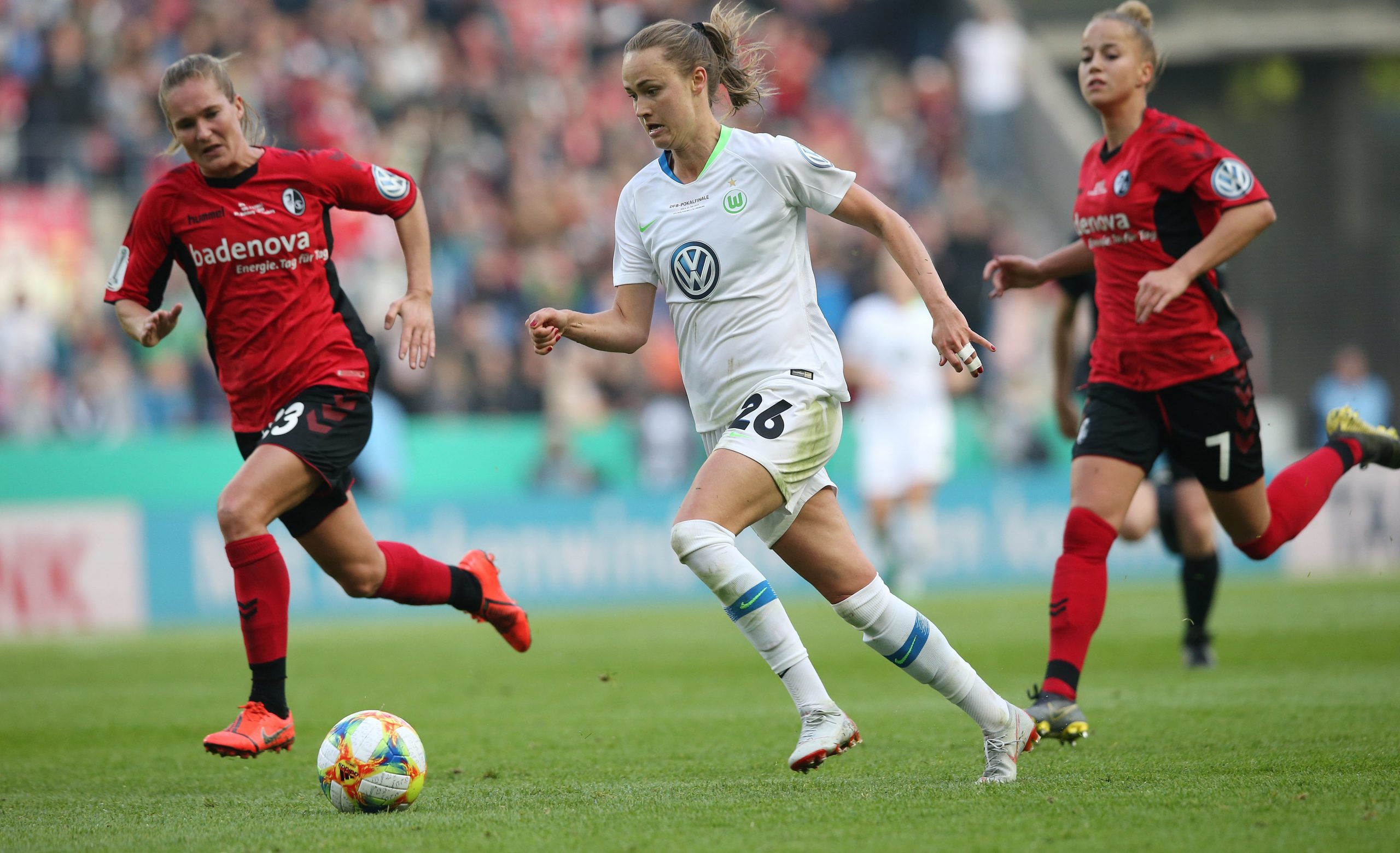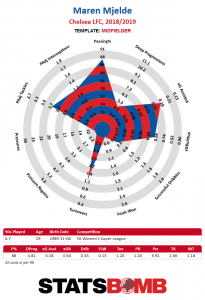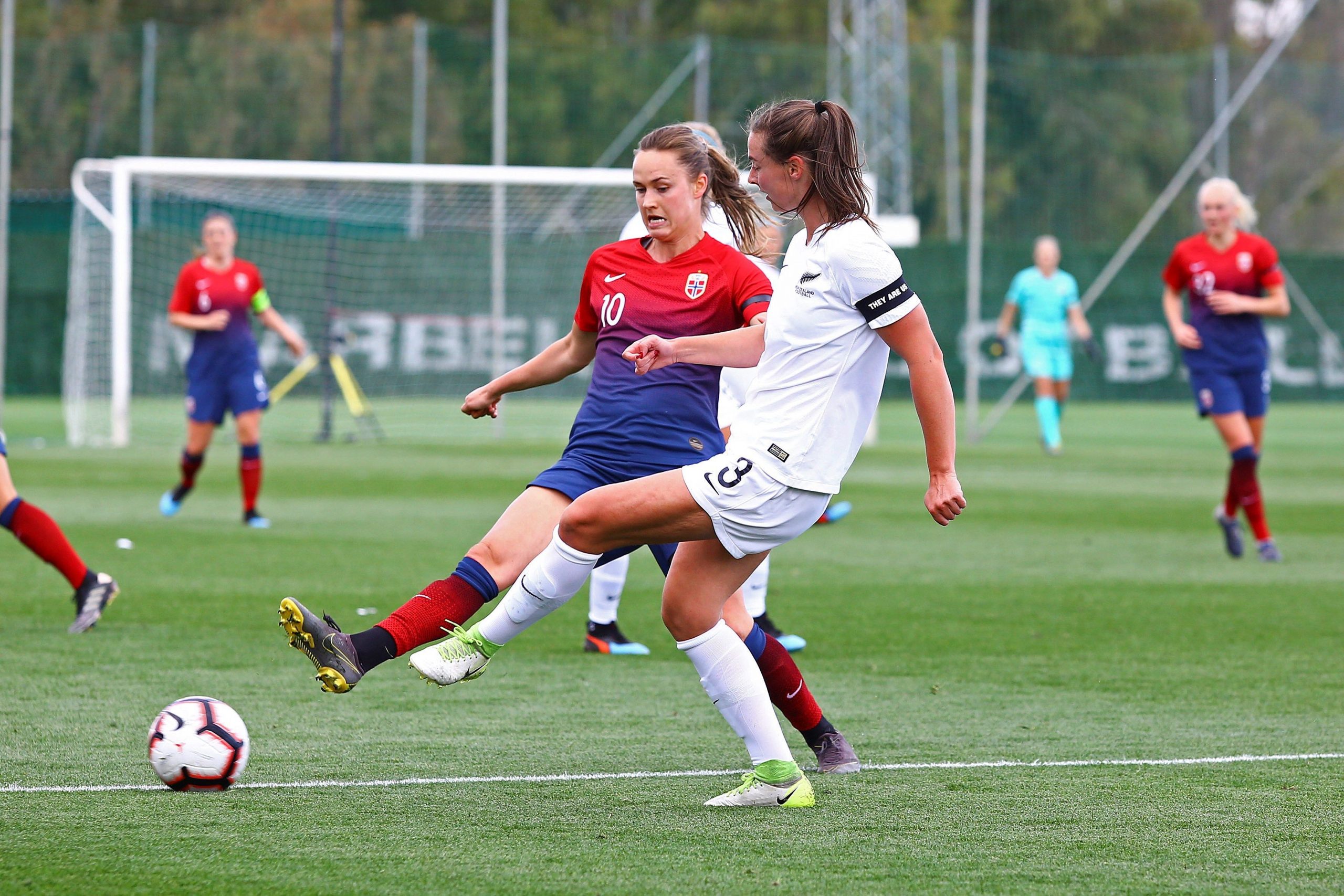The European Championship in the Netherlands two years ago has become somewhat of a defining moment in Norwegian women’s football. It was an exceptionally poor tournament for Fotballjentene, who had to suffer the agony of going home before the knockout stages without having scored a single goal. But the mess had only just begun. The tournament became the tipping point that shattered an already fragile relationship between Ada Hegerberg and the Norwegian Football Federation (Norges Fotballforbund). Both Hegerberg and the team have been adamant that both are looking ahead and see no reason to dwell. However, there’s no denying that losing a player of her stature will raise its questions – both about why, and more importantly, going into this World Cup, where it leaves Norway. Who to look to in the absence of Hegerberg There is no like for like replacement for Hegerberg in the Norwegian player pool; hell, there isn’t one anywhere in the world. This does not mean that Norway’s manager Martin Sjögren doesn’t have plenty of qualified options in attack, though. Caroline Graham Hansen (Barcelona, formerly of VfL Wolfsburg), Guro Reiten (a new signing for Chelsea), Isabell Herlovsen (Kolbotn) and Lisa-Maria Utland (Rosengård) are Norway’s main attacking threats. Graham Hansen and Reiten both have exceptional technical abilities and can carve open defenses almost at will, while Herlovsen is a proven goal scorer for Norway with Utland her understudy. But when the most recognizable star is absent, people naturally look towards the next in line, leaving all eyes on Graham Hansen. She’s a football artist, one that is capable of the spectacular, and if anyone can make the difference in a team, it’s her. Graham Hansen may not be the most frequent goal scorer (with eight league goals in 22 appearances this season for Wolfsburg) but she is Norway’s main creative outlet and her understanding of where her teammates are and how to progress the ball to them is second to none.  Meanwhile, it’s Herlovsen who’s Norway’s most reliable player in front of goal, and the team will need her firing at all cylinders to stand a chance of going far this tournament. She’ll be supported by Rieten who, like Graham Hansen, is technically gifted like few others and can look unplayable. She has a nose for goal – at least in the Norwegian league (13 in ten league appearances this season, and 52 in 53 since 2017). Her left foot is golden and she’s a serious threat from distance as well as in the box. Reiten may not have had the impact at the Euros that many were hoping for, but Norway will hope this is the tournament where she announces herself to the world. Keys to success Norway will be one of the younger squads that turn out in France and there is no lack of interesting young talent available to Sjögren. However, there are also plenty of questions that remain unanswered, with less depth than the major nations and the spectre of a lacking Plan B at Euro 2017. Making the attacking pieces fit There is no doubt Norway have many of the right puzzle pieces to entertain us this summer. A key to success will be to fit those pieces together, which was something that didn’t happen during the Euro in 2017. Sjögren has mostly lined up in variations of a 4-4-2 formation, with Herlovsen up top together with Utland, and Reiten and Graham Hansen out wide. Thus far, Sjögren hasn’t managed to get the best out of Reiten and there’s concerns about whether the formations Norway have used have hindered her. She works best when she gets to play freely and this could be what makes or breaks Norway. Defensive woes Despite much of the talk around Norway being on their attack and how it will cope in Hegerberg’s absence, this is not actually where Norway’s main concerns lie. Their biggest worry is their defence. Sjögren’s preferred back four has consisted of Kristine Minde, Chelsea pair Maren Mjelde and Maria Thorisdottir, and Ingrid Moe Wold. It’s not a bad defence on paper at all, and utilising Mjelde in defence gives the team a firm base while also anchoring them through their captain’s leadership.
Meanwhile, it’s Herlovsen who’s Norway’s most reliable player in front of goal, and the team will need her firing at all cylinders to stand a chance of going far this tournament. She’ll be supported by Rieten who, like Graham Hansen, is technically gifted like few others and can look unplayable. She has a nose for goal – at least in the Norwegian league (13 in ten league appearances this season, and 52 in 53 since 2017). Her left foot is golden and she’s a serious threat from distance as well as in the box. Reiten may not have had the impact at the Euros that many were hoping for, but Norway will hope this is the tournament where she announces herself to the world. Keys to success Norway will be one of the younger squads that turn out in France and there is no lack of interesting young talent available to Sjögren. However, there are also plenty of questions that remain unanswered, with less depth than the major nations and the spectre of a lacking Plan B at Euro 2017. Making the attacking pieces fit There is no doubt Norway have many of the right puzzle pieces to entertain us this summer. A key to success will be to fit those pieces together, which was something that didn’t happen during the Euro in 2017. Sjögren has mostly lined up in variations of a 4-4-2 formation, with Herlovsen up top together with Utland, and Reiten and Graham Hansen out wide. Thus far, Sjögren hasn’t managed to get the best out of Reiten and there’s concerns about whether the formations Norway have used have hindered her. She works best when she gets to play freely and this could be what makes or breaks Norway. Defensive woes Despite much of the talk around Norway being on their attack and how it will cope in Hegerberg’s absence, this is not actually where Norway’s main concerns lie. Their biggest worry is their defence. Sjögren’s preferred back four has consisted of Kristine Minde, Chelsea pair Maren Mjelde and Maria Thorisdottir, and Ingrid Moe Wold. It’s not a bad defence on paper at all, and utilising Mjelde in defence gives the team a firm base while also anchoring them through their captain’s leadership.  However, Sjögren has opted to only take three centrebacks with him to France, with captain Mjelde being one of them. Previously played as a midfielder, she has now been moved to defence and Thorisdottir, her Chelsea teammate, will most likely partner her. But both Mjelde and Thorisdottir have had long spells on the sideline this season, with the latter only seeing 308 minutes of action in the Women’s Super League. If one of them is unavailable, there’s only Stine Hovland as back-up. Sjögren is not stranger at converting players, but it's less than ideal to have to do it in the middle of a World Cup. Right-back is pleasantly settled, but the left-back position has long been a headache for Norway. The solution so far has been to convert Minde, who is usually a winger. Other options have been Synne Skinnes Hansen, Emilie Haavi and Elise Thorsnes – all converted attackers who don’t play this role for their clubs. Minde has done well and has brought some attributes to the position that suits Norway, but it’s far from ideal. The injuries and a constant testing of personnel has meant that the Norwegian defence has looked shaky and it’s not a back-line that instills a lot of confidence going into the World Cup. Will Norway’s centre midfield be their secret weapon? As it stands, with Mjelde moving back into defence, the options for the two centre-midfield positions are all under the age of 25 and none have over 30 caps to their name. This may be a lack of experience, but it is a midfield filled with potential and perhaps one of the most interesting and vibrant ones heading to France. Twenty-one-year-old Ingrid Syrstan Engen, who has already secured a move to European juggernauts Wolfsburg, has been a constant in Sjögren’s side since making her debut last year. She is a rare talent, who has all the right traits to be the new midfield general. She’s strong and pacey, but perhaps most importantly, she’s a quick thinker who reads the game well. Her defensive qualities make her one of Norway’s most important players, especially considering the questions surrounding their defence. The amount of options is one of the most promising things about this Norway side. Sjögren has preferred to pair Engen with Vilde Bøe Risa in the middle of the park, but he also has players such as Frida Maanum – who has been labelled one of Norway’s most talented young players in a long time – and Karina Sævik available. Regardless of who he uses, the individual quality won’t drop much, and the trio also gives Sjögren some tactical flexibility. He can play either one next to Engen depending on what the match requires, or he can play with all three in the middle. The quality is there, but picking the right ones and being able to tweak before and during games will be key. Not many have been talking about Norway’s midfield, but this young core could very well, if used right, be their secret weapon. Expectations: There’s a certain sense of pressure on Norway and Sjögren, perhaps not a spoken one, but they’ll have added pressure on them to show that the Euros were a blip and not indicative of a wider problem. The excuses of a new coach and poor preparations won’t fly this time, and there is an expectation that Sjögren and the team will have learned from the evaluations after that tournament. The absence of Hegerberg will, despite everyone’s best efforts to deflect, add unwanted pressure. There have been endless questions and speculations about her absence, both from domestic and international media and fans, and that focus unfortunately doesn’t look like it’s going away. Despite this, and although it’s obviously tough to say from the outside looking in, there seems to be a genuine positivity around the squad. Norway’s group – with hosts France, South Korea, and Nigeria – isn’t one that Norway can just breeze through, but anything other than getting through it will be yet another massive disappointment. From there it becomes more unpredictable, but a quarter-final is not an unrealistic target. The defence raises its questions and it remains to be seen whether Sjögren can get the tactical midfield and attacking pieces to fit, but this will be an interesting squad to follow – both for those familiar with the Norwegian players and those who have yet to see many of these young and talented players in action. There is a good mix of experience and youth, between up-and-comers and players who have long since proven themselves. And, after the failure at the Euros, Norway is a team that’s hungry to prove themselves. Katja Kragelund has followed women's football for around 10 years. She primarily focuses on women's football in Scandinavia and Scandinavians playing abroad. You can find her on Twitter @applessquabble
However, Sjögren has opted to only take three centrebacks with him to France, with captain Mjelde being one of them. Previously played as a midfielder, she has now been moved to defence and Thorisdottir, her Chelsea teammate, will most likely partner her. But both Mjelde and Thorisdottir have had long spells on the sideline this season, with the latter only seeing 308 minutes of action in the Women’s Super League. If one of them is unavailable, there’s only Stine Hovland as back-up. Sjögren is not stranger at converting players, but it's less than ideal to have to do it in the middle of a World Cup. Right-back is pleasantly settled, but the left-back position has long been a headache for Norway. The solution so far has been to convert Minde, who is usually a winger. Other options have been Synne Skinnes Hansen, Emilie Haavi and Elise Thorsnes – all converted attackers who don’t play this role for their clubs. Minde has done well and has brought some attributes to the position that suits Norway, but it’s far from ideal. The injuries and a constant testing of personnel has meant that the Norwegian defence has looked shaky and it’s not a back-line that instills a lot of confidence going into the World Cup. Will Norway’s centre midfield be their secret weapon? As it stands, with Mjelde moving back into defence, the options for the two centre-midfield positions are all under the age of 25 and none have over 30 caps to their name. This may be a lack of experience, but it is a midfield filled with potential and perhaps one of the most interesting and vibrant ones heading to France. Twenty-one-year-old Ingrid Syrstan Engen, who has already secured a move to European juggernauts Wolfsburg, has been a constant in Sjögren’s side since making her debut last year. She is a rare talent, who has all the right traits to be the new midfield general. She’s strong and pacey, but perhaps most importantly, she’s a quick thinker who reads the game well. Her defensive qualities make her one of Norway’s most important players, especially considering the questions surrounding their defence. The amount of options is one of the most promising things about this Norway side. Sjögren has preferred to pair Engen with Vilde Bøe Risa in the middle of the park, but he also has players such as Frida Maanum – who has been labelled one of Norway’s most talented young players in a long time – and Karina Sævik available. Regardless of who he uses, the individual quality won’t drop much, and the trio also gives Sjögren some tactical flexibility. He can play either one next to Engen depending on what the match requires, or he can play with all three in the middle. The quality is there, but picking the right ones and being able to tweak before and during games will be key. Not many have been talking about Norway’s midfield, but this young core could very well, if used right, be their secret weapon. Expectations: There’s a certain sense of pressure on Norway and Sjögren, perhaps not a spoken one, but they’ll have added pressure on them to show that the Euros were a blip and not indicative of a wider problem. The excuses of a new coach and poor preparations won’t fly this time, and there is an expectation that Sjögren and the team will have learned from the evaluations after that tournament. The absence of Hegerberg will, despite everyone’s best efforts to deflect, add unwanted pressure. There have been endless questions and speculations about her absence, both from domestic and international media and fans, and that focus unfortunately doesn’t look like it’s going away. Despite this, and although it’s obviously tough to say from the outside looking in, there seems to be a genuine positivity around the squad. Norway’s group – with hosts France, South Korea, and Nigeria – isn’t one that Norway can just breeze through, but anything other than getting through it will be yet another massive disappointment. From there it becomes more unpredictable, but a quarter-final is not an unrealistic target. The defence raises its questions and it remains to be seen whether Sjögren can get the tactical midfield and attacking pieces to fit, but this will be an interesting squad to follow – both for those familiar with the Norwegian players and those who have yet to see many of these young and talented players in action. There is a good mix of experience and youth, between up-and-comers and players who have long since proven themselves. And, after the failure at the Euros, Norway is a team that’s hungry to prove themselves. Katja Kragelund has followed women's football for around 10 years. She primarily focuses on women's football in Scandinavia and Scandinavians playing abroad. You can find her on Twitter @applessquabble
2019
Balling without the Ballon d'Or winner: Norway World Cup preview
By admin
|
June 7, 2019
